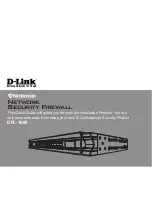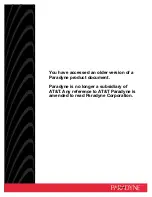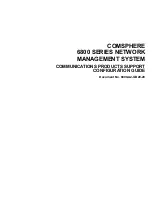
Foundry NetIron MLX Series Installation and Basic Configuration Guide
7-36
© 2008 Foundry Networks, Inc.
December 2008
<command-integer> is one of the following:
20
– Upload the startup-config file from the Foundry device’s code flash to the TFTP server.
21
– Download a startup-config file from a TFTP server to the Foundry device’s code flash.
22
– Upload the running-config from the Foundry device’s code flash to the TFTP server.
23
– Download a configuration file from a TFTP server into the Foundry device’s running-config.
30
– Download the config to DRAM from a TFTP server, clear the running-running config, and overwrite
with the new config.
NOTE:
Command option
23
adds configuration information to the running-config on the device, and does
not replace commands. If you want to replace configuration information in the device, use “no” forms of the
configuration commands to remove the configuration information, then use configuration commands to create
the configuration information you want. Command option
30
erases the entire running-config and replaces it
with the new configuration file.
Erasing Image and Configuration Files
To erase software images or configuration files, use the commands described below. These commands are valid
at the Privileged EXEC level of the CLI.
•
erase flash primary
erases the image stored in primary flash of the system.
•
erase flash secondary
erases the image stored in secondary flash of the system.
•
erase startup-config
erases the configuration stored in the startup configuration file; however, the running
configuration remains intact until system reboot.
File Synchronization
This section provides details for synchronizing the files on the management and interface modules.
File Synchronization Between the Active and Standby Management Modules
Each active and standby management module contains the following files that can be synchronized between the
two modules:
•
Flash code – The flash code can include the following files:
•
monitor, which contains the management module’s Real Time Operating System (RTOS).
•
primary, which contains the management module’s primary IronWare image.
•
secondary, which contains the management module’s secondary IronWare image.
(An IronWare image contains the layer 1 – 3 software run by the management module.) During startup or
switchover, the active module compares the standby module’s flash code to its own. If differences exist, the
active module synchronizes the standby module’s flash code with its own. If you update the flash code on the
active module, the active module automatically synchronizes (without comparison) the standby module’s flash
code with its own.
•
System-config file – The flash code also includes the system-config file. During startup or switchover, the
active module compares the standby module’s system-config file to its own. If differences exist, the active
module synchronizes the standby module’s system-config file with its own. When you save changes to the
system-config file on the active module, the active module automatically synchronizes (without comparison)
the standby module’s system-config file with its own.
















































